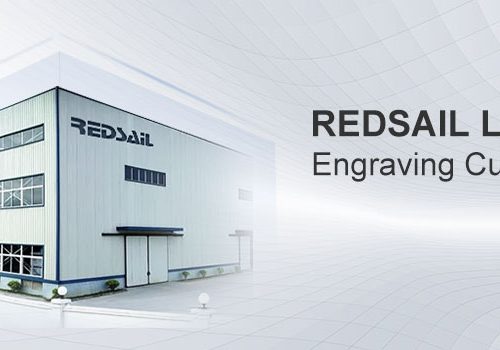
Laser marking is a very advanced marking technology. Through the focused laser engraving technology, the characters and patterns that need to be marked are engraved on the surface of the object. Compared with the traditional printing technology, laser marking has the characteristics of good quality, high consistency, strong wear resistance, high efficiency, cost saving, safety and reliability, and is widely used in the PCB industry.
Sample: print two-dimensional code on PCB
Market demand under scientific and technological progress
With the rapid development of the IT industry, smart phones, wearable electronics and other products are constantly developing toward lightness and miniaturization. Consumers have higher and higher requirements for electronic products, and PCB production must also be improved. In order to realize the quality control of PCB production process, marking characters, one-dimensional code, two-dimensional code and other information on PCB for traceability has become the development trend of the industry.
The traditional printing technology can not meet the new market technology requirements because of its poor wear resistance, low precision, poor aesthetics and environmental pollution. Therefore, laser marking has become a trend in PCB industry.
Sample: print two-dimensional code on PCB
Defects of traditional printing technology
In the past, silk screen printing in traditional printing was usually used to mark image pattern drawing, company logo printing, contact information, two-dimensional code, etc. on the surface of PCB. Under the original market demand, traditional printing technology can also meet the requirements of the market, but with the continuous improvement of the quality of electronic products, consumers’ requirements are getting higher and higher, resulting in higher and higher marking quality of PCB boards in the market. Traditional printing technology can not meet the new market requirements, and its shortcomings are becoming more and more obvious, such as:
- Poor abrasion resistance. The abrasion resistance mentioned here is not the abrasion resistance of metal materials, but refers to the fact that the ink on the PCB surface is often worn away in use, resulting in blur and color loss.
- Aesthetic requirements: the printed appearance on the metal surface feels low-end, which is not suitable for some products with high appearance requirements, such as commemorative badges, metal business cards, exquisite company publicity nameplates, artwork description nameplates, etc., which can not meet their appearance requirements.
- Chemical raw materials such as organic solvents and heavy metal elements need to be used in the ordinary printing process. These substances have certain toxicity and will cause personal injury to screen printing workers. In addition, during the drying process of screen printing ink, volatile chemical raw materials will gradually volatilize into the air, causing pollution to the air and the environment.
Sample: print two-dimensional code on PCB
Unique advantages of laser marking
The emergence of laser marking technology has successfully solved a series of problems existing in traditional printing technology. It is characterized by high marking accuracy, fast speed and stable performance. And it only needs to be controlled by computer, which is simple to operate, and can print all kinds of complex patterns, characters, two-dimensional codes and other contents, fully meeting the requirements of high-quality marks in the existing PCB industry. Compared with traditional printing technology, laser marking technology has many advantages: - Good quality and strong wear resistance. The PCB surface is clearly and beautifully marked, and can be marked with various logos, patterns, two-dimensional codes and words. Moreover, the patterns are directly carved on the materials, which makes the wear resistance more prominent;
- High machining accuracy. After the laser beam emitted by the laser is focused, the minimum spot diameter can reach 10um (UV laser), which is of great help in processing complex patterns and precision machining;
- High efficiency, simple operation and cost reduction. Users only need to set parameters on the computer to mark directly, and the marking of the material surface can be completed in just a few seconds to more than ten seconds.
- Nondestructive marking. The laser marking adopts non-contact processing, and the laser head does not need to contact the material surface, so it is unnecessary to consider the damage to the material;
- Wide range of use, safety and environmental protection. All kinds of thin metal / non-metallic materials can be marked;
- Stable performance and long service life of equipment. With the development of technology, the service life of lasers and equipment has been greatly increased.
Application of UV laser marking and CO2 laser marking technology in PCB industry
In the laser marking application of PCB boards, UV laser marking and CO2 laser marking are used most. UV laser marking and CO2 laser marking have become the preferred technologies for PCB surface marking due to their small thermal impact, good processing effect, high accuracy and fast speed.
The PCB industry adopts laser marking two-dimensional code technology, which can realize the traceability of PCB production, process and quality, and realize the requirements of automation and intelligent management, meeting the needs of lean production, quality control and process improvement. Marking two-dimensional codes on the PCB surface is a common demand of high-end customers at present, and has been widely used.

